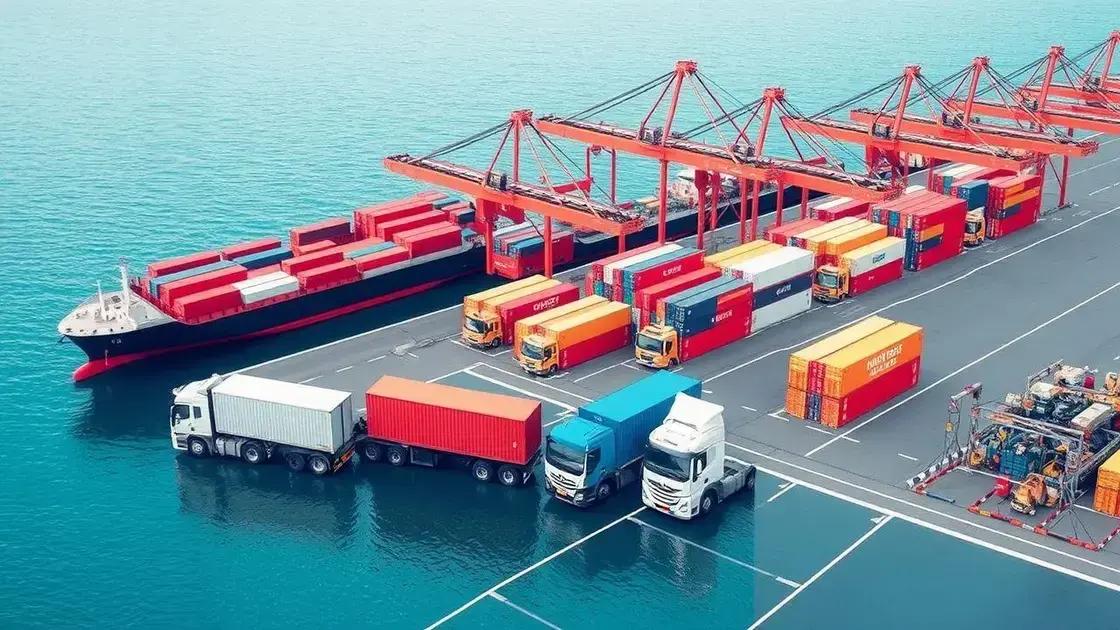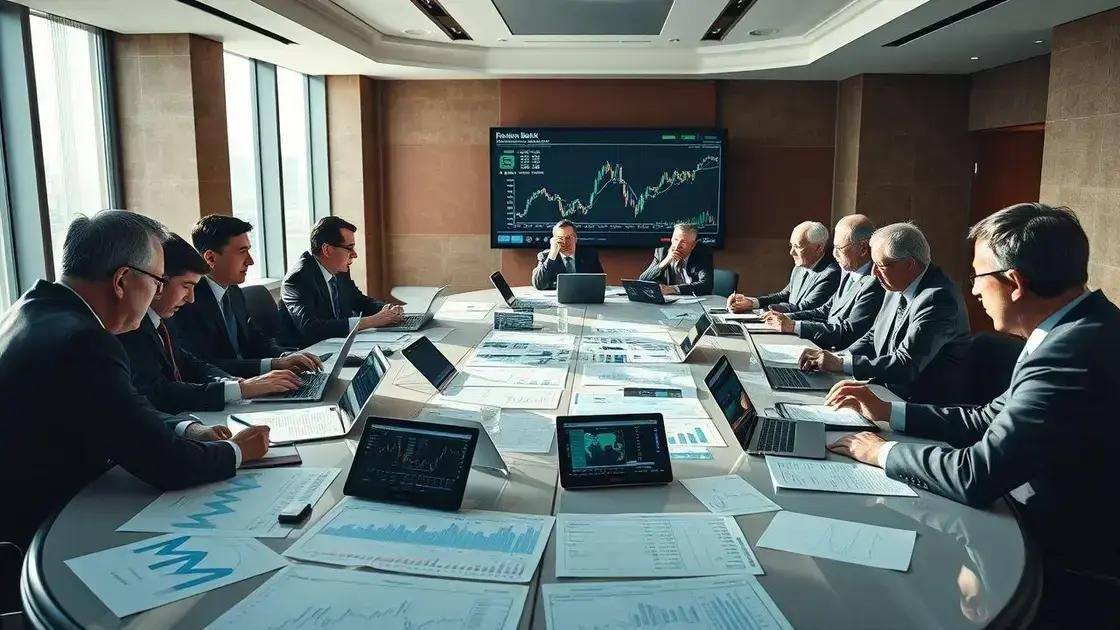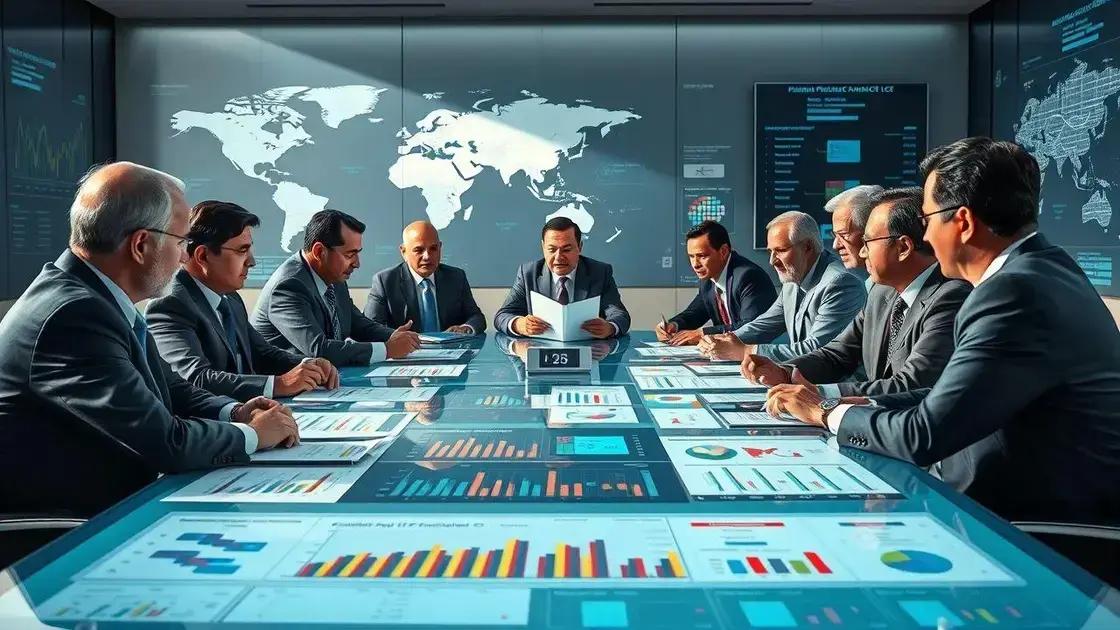Pandemic impact on global economy: what to know

Anúncios
The pandemic has significantly impacted the global economy, accelerating changes such as remote work, automation, and a focus on sustainability while prompting governments to implement financial aid and reform policies for recovery.
The pandemic impact on global economy brings to light challenges we never imagined facing. Have you felt its repercussions in your daily life? Let’s dive into how this event reshaped our financial landscape.
Anúncios
Understanding the immediate effects of the pandemic
Understanding the immediate effects of the pandemic is crucial for grasping its global economic implications. The onset of the pandemic caused worldwide disruptions that affected daily life as we knew it. Many industries faced unexpected challenges, leading to a ripple effect across the economy.
Job Losses and Unemployment Rates
One of the most significant impacts was job losses. Millions of people found themselves unemployed as businesses shut down or reduced their workforce. The rapid increase in unemployment rates was alarming and unprecedented. It created a sense of instability and uncertainty for many families around the globe.
Anúncios
Government programs were quickly established to address these job losses. These programs aimed to support those affected and stabilize the economy. Despite these efforts, the road to recovery remains uncertain, raising concerns about long-term unemployment.
Impact on Small Businesses
Another area hit hard was the small business sector. Many small businesses struggled to stay afloat during the pandemic, facing challenges such as
- Limited customer access
- Decreased revenue
- Supply chain disruptions
Some businesses adapted by transitioning to online operations, allowing them to reach customers in new ways. However, many others closed for good, highlighting the fragility of small enterprises in times of crisis.
Consumer Behavior Changes
Consumer behavior also shifted drastically. As people stayed home, spending habits changed. More focus was placed on essential goods, while luxury items saw a decline in demand. This shift forced businesses to rethink their strategies in response to new consumer priorities.
The pandemic not only affected what we buy but also how we shop. Online shopping surged as people opted for safety over in-store experiences. This change presents both challenges and opportunities for businesses aiming to adapt.
As we analyze these immediate effects, it’s evident that the pandemic has ushered in a new era of economic uncertainty. Understanding these impacts can help inform future decisions, both for individuals and policymakers alike.
Sector-by-sector analysis of economic impact
A sector-by-sector analysis of the economic impact of the pandemic reveals varying outcomes across different industries. Each sector faced unique challenges, which shaped their response and recovery strategies.
Healthcare Sector
The healthcare sector experienced significant strain as hospitals became overwhelmed. Demand for services like emergency care surged, leading to increased operational costs. Additionally, the need for personal protective equipment (PPE) created supply shortages that impacted other industries.
Travel and Tourism
In contrast, the travel and tourism industry faced dramatic declines. With travel restrictions in place, many airlines and hotels suffered from decreased customers. Job loss in this sector was severe, and recovery is slow as people remain hesitant to travel.
- Flight cancellations increased significantly.
- Hotels reported record low occupancy rates.
- Tourism-dependent regions faced economic challenges.
Retail Sector
The retail sector had to adapt quickly. Initially, many stores closed or operated with limited capacity. However, the shift to online shopping became a critical lifeline. Retailers that embraced e-commerce thrived while others lagged behind.
Furthermore, the pandemic changed consumer habits. People began to prioritize essential purchases over luxuries, impacting revenue streams. These shifts forced businesses to reconsider their strategies and inventory.
Food Industry
The food industry also saw drastic changes. Restaurants pivoted to take-out and delivery services to survive. Many planned menu modifications to cater to changing demands. This sector experienced both challenges and opportunities.
As we analyze these sectors, it’s clear that the pandemic’s economic impact varies widely. Understanding these differences provides insight into what recovery looks like for various industries.
Long-term economic changes post-pandemic

Long-term economic changes post-pandemic will significantly shape our future. Understanding these shifts is essential for individuals and businesses alike. Many sectors will evolve as they adapt to new realities, creating both challenges and opportunities.
Remote Work Revolution
One of the most notable changes is the rise of remote work. Many companies discovered that their employees could work efficiently from home. This shift may lead to permanent changes in workplace culture.
- Flexible working hours are becoming more common.
- Companies are rethinking office space requirements.
- Talent pools have expanded, as location is less of a barrier.
Increased Automation
Another significant shift is the acceleration towards automation. The pandemic forced businesses to streamline operations to stay resilient. Industries are now investing in technology that enhances efficiency and reduces reliance on human labor.
This trend raises questions about job displacement and the need for reskilling. Many workers may need to transition into new roles as automation becomes mainstream. Industries must balance technology with the human element to maintain productivity.
Changes in Consumer Behavior
Consumer behavior is changing as well. E-commerce growth soared during the pandemic and shows no sign of slowing down. People have become accustomed to online shopping, pushing businesses to enhance their digital presence.
Additionally, consumers are increasingly focused on sustainability. They want brands that align with their values, driving companies to adopt eco-friendly practices. These shifts present opportunities for businesses willing to innovate.
Global Supply Chain Adjustments
The pandemic exposed vulnerabilities in global supply chains. As a result, companies are reevaluating their dependency on distant suppliers. Many are now investing in local alternatives to enhance resilience.
This shift not only creates opportunities for local economies but also reduces shipping costs and delays. Businesses that adapt their supply chains accordingly may gain a competitive edge in the post-pandemic world.
Understanding these long-term economic changes is vital for shaping strategies that will thrive in a new environment. By being proactive, individuals and companies can better navigate this evolving landscape.
How governments are responding to economic challenges
How governments are responding to economic challenges is critical in shaping recovery. Across the globe, governments have implemented various strategies to address the fallout of the pandemic. These strategies aim to support individuals and businesses while stabilizing the economy.
Financial Aid and Stimulus Packages
Many governments introduced financial aid and stimulus packages to provide immediate relief. These measures were designed to support those hit hardest, including unemployed individuals and struggling businesses. Such packages often include:
- Direct cash payments to citizens.
- Unemployment benefits enhancements.
- Grants and loans for small businesses.
These initiatives have helped people meet essential needs and keep businesses afloat. However, questions about sustainability and long-term impact arise.
Monetary Policy Adjustments
Governments and central banks have also adjusted monetary policies. Lowering interest rates is a common tactic. This approach aims to stimulate borrowing and spending, fostering economic growth. Access to credit has become more critical as businesses seek funds for operations.
Quantitative easing, a strategy that involves buying financial assets to inject money into the economy, has also been used. This measure seeks to support liquidity and encourage lending.
Sustainable Recovery Initiatives
Looking towards the future, many governments are focusing on sustainable recovery. This involves investments in green technologies and infrastructure. By prioritizing sustainability, governments hope to create jobs while addressing climate change.
Public health and economic resilience are increasingly seen as interconnected. As such, spending on healthcare and technology advancements is crucial to prepare for potential future crises.
Governments are navigating complex challenges to support their populations amidst uncertainty. Understanding these responses helps individuals and businesses adapt and plan for the road ahead.
Future predictions for the global economy
Future predictions for the global economy are influenced by numerous factors. As governments and businesses adapt to the post-pandemic world, various trends are emerging. Understanding these predictions can help individuals and companies prepare for what lies ahead.
Global Recovery Trends
Experts forecast a gradual recovery as vaccination rates increase and restrictions ease. Many economies are expected to rebound, with a focus on recovery in key sectors. Economists predict that sectors like travel, hospitality, and retail will see significant growth.
- Increased consumer spending is anticipated as confidence returns.
- Investment in infrastructure is likely to boost job creation.
- Emerging markets may experience a faster recovery compared to developed nations.
Technological Advancements
Technological integration will continue to reshape the economy. The pandemic accelerated the digital transformation across industries. Businesses that invest in technology are expected to thrive in the future.
Automation and artificial intelligence will play pivotal roles in maintaining efficiency. Companies adopting these technologies may gain a competitive edge as the demand for skilled workers increases.
Focus on Sustainability
Future predictions also highlight a growing emphasis on sustainability. As consumers become more environmentally conscious, businesses are pressured to adopt sustainable practices. This shift will likely influence purchasing decisions and investment strategies.
Governments are increasingly promoting green initiatives, which will shape economic policies shaping the post-pandemic recovery. They aim to create both economic stability and environmental sustainability simultaneously.
Geopolitical Influences
Geopolitical factors will continue to impact global economic dynamics. Trade relations, political stability, and international collaborations will play crucial roles in shaping the future economy.
Countries that effectively navigate these geopolitical challenges may find themselves better positioned for growth. Understanding these dynamics is essential for businesses operating on a global scale.
Overall, the future of the global economy remains uncertain. However, staying informed about these predictions can help individuals and businesses make strategic decisions as they adapt to an ever-changing landscape.
FAQ – Frequently Asked Questions about the Pandemic’s Impact on the Global Economy
What are the main long-term economic changes expected after the pandemic?
Key changes include a focus on remote work, increased automation, and a stronger emphasis on sustainability in business practices.
How have government responses shaped the recovery process?
Governments have implemented financial aid, adjusted monetary policies, and promoted sustainable recovery initiatives to support individuals and businesses.
What role does technology play in future economic trends?
Technology will continue to drive innovation, with businesses investing in automation and digital solutions to enhance efficiency and adapt to changing consumer behavior.
Why is adaptability important in the post-pandemic economy?
Adaptability allows individuals and businesses to navigate uncertainties, seize new opportunities, and respond to shifts in consumer preferences and global dynamics.






